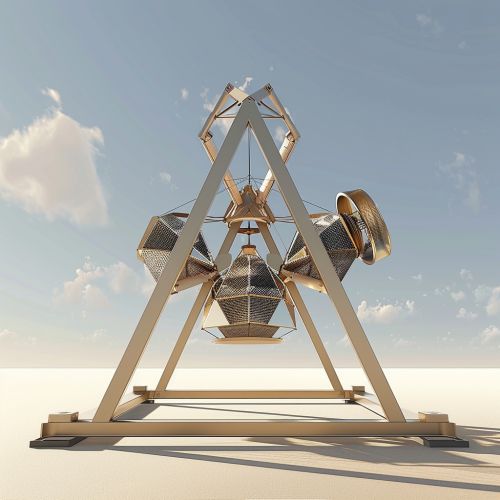Einstein Telescope
Introduction
The Einstein Telescope (ET) is a proposed third-generation ground-based gravitational wave observatory. The project aims to significantly enhance the detection capabilities of gravitational waves, which were first observed by the LIGO and Virgo collaborations in 2015. The ET is designed to have a sensitivity that is up to 100 times greater than the current detectors, allowing it to observe a much larger volume of the universe and detect gravitational waves from sources that are currently inaccessible.


Design and Technology
The design of the Einstein Telescope is based on a triangular configuration with three arms, each measuring 10 kilometers in length. This is a departure from the L-shaped design of current detectors, and it allows for the simultaneous measurement of two independent gravitational wave polarizations. The detector will be located underground to reduce the impact of seismic noise and other environmental disturbances.
The ET will employ several advanced technologies to achieve its high sensitivity. These include cryogenic cooling of the mirrors to reduce thermal noise, high-quality silicon test masses for the mirrors, and a dual-recycled Michelson interferometer configuration with multiple nested interferometers to increase the signal-to-noise ratio.
Scientific Goals
The scientific goals of the Einstein Telescope are broad and ambitious. Its enhanced sensitivity will allow it to observe a wide range of astrophysical and cosmological phenomena. Some of the key scientific targets include:
- Observing binary neutron star mergers up to a redshift of 2, which will provide valuable information about the equation of state of neutron star matter.
- Detecting gravitational waves from rotating neutron stars, which can provide insights into their internal structure.
- Observing binary black hole mergers up to a redshift of 20, which can shed light on the formation and evolution of black holes.
- Probing the very early universe by detecting a stochastic background of gravitational waves, which could provide evidence for cosmic inflation.
Challenges and Future Prospects
The Einstein Telescope represents a significant leap forward in gravitational wave astronomy, but it also presents several technical and logistical challenges. The construction of such a large underground facility will require substantial resources and international collaboration. The development and implementation of the advanced technologies needed for the ET also pose significant challenges.
Despite these challenges, the prospects for the Einstein Telescope are promising. The project has received strong support from the scientific community, and it is currently in the design study phase. If all goes according to plan, construction could begin in the mid-2020s, with the first observations taking place in the 2030s.
